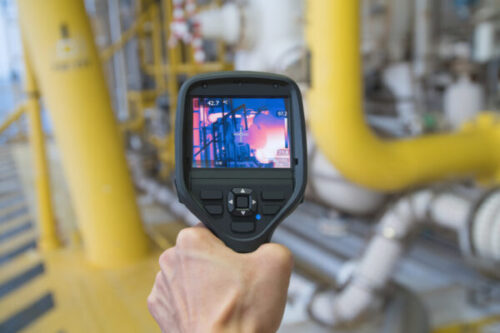The 8-Second Trick For Roar Solutions
The 8-Second Trick For Roar Solutions
Blog Article
Roar Solutions Fundamentals Explained
Table of ContentsThe Definitive Guide for Roar SolutionsWhat Does Roar Solutions Do?Roar Solutions Can Be Fun For Anyone
In order to safeguard installations from a possible explosion an approach of analysing and categorizing a possibly harmful area is called for. The function of this is to make certain the proper choice and installment of equipment to ultimately protect against a surge and to make certain safety of life.
(https://www.dreamstime.com/thomascarrillo4740_info)
No tools should be installed where the surface area temperature level of the equipment is higher than the ignition temperature of the offered risk. Below are some typical dirt hazardous and their minimum ignition temperature level. Coal Dirt 380C 225C Polythene 420C (thaws) Methyl Cellulose 420C 320C Starch 460C 435C Flour 490C 340C Sugar 490C 460C Grain Dirt 510C 300C Phenolic Material 530C > 450C Aluminium 590C > 450C PVC 700C > 450C Residue 810C 570C The chance of the hazard existing in a concentration high sufficient to trigger an ignition will vary from location to location.
In order to classify this risk an installment is separated right into locations of danger depending upon the quantity of time the harmful exists. These areas are referred to as Zones. For gases and vapours and dirts and fibres there are 3 areas. Area 0 Area 20 A hazardous atmosphere is extremely likely to be present and might exist for extended periods of time (> 1000 hours annually) or even continuously Area 1 Zone 21 A dangerous atmosphere is feasible however unlikely to be existing for extended periods of time (> 10 450 C [842 F] A category of T6 suggests the minimal ignition temperature is > 85 C [185 F] Hazardous location electric devices perhaps designed for use in higher ambient temperature levels. This would suggested on the score plate e.g. EExe II C T3 Ta + 60C( This means at 60C ambient T3 will certainly not be gone beyond) T1 T1, T2, T3, T4, T5, T6 T2 T2, T3, T4, T5, T6 T3 T3, T4, T5, T6 T4 T4, T5, T6 T5 T5, T6 T6 T6 A T Class ranking of T1 indicates the maximum surface temperature produced by the instrument at 40 C is 450 C. Thinking the linked T Course and Temperature level score for the equipment are ideal for the area, you can always make use of an instrument with a much more rigid Department ranking than required for the location. There isn't a clear response to this question. It truly does rely on the sort of equipment and what repairs require to be performed. Equipment with particular test treatments that can not be carried out in the field in order to achieve/maintain 3rd party rating. Should return to the factory if it is before the devices's solution. Area Repair Service By Authorised Employee: Challenging testing might not be called for however specific treatments may require to be followed in order for the equipment to keep its third party score. Authorised employees must be employed to perform the work properly Fixing should be a like for like substitute. New element need to be thought about as a straight replacement calling for no unique screening of the tools after the fixing is complete. Each piece of equipment with a hazardous rating ought to be assessed individually. These are detailed at a high degree below, yet for more thorough info, please refer directly to the guidelines.
How Roar Solutions can Save You Time, Stress, and Money.
The devices register is a thorough data source of tools documents that includes a minimum set of fields to identify each thing's area, technical parameters, Ex lover category, age, and environmental information. The proportion of In-depth to Shut assessments will be figured out by the Equipment Danger, which is evaluated based on ignition danger (the likelihood of a source of ignition versus the probability of a combustible ambience )and the dangerous area category
( Zone 0, 1, or 2). Implementing a durable Risk-Based Inspection( RBI )strategy is vital for guaranteeing compliance and security in taking care of Electric Equipment in Hazardous Locations( EEHA).
The Definitive Guide to Roar Solutions

In terms of eruptive threat, an unsafe location is an environment in which an eruptive ambience is existing (or may be expected to be existing) in quantities that require unique precautions for the building and construction, installation and use of devices. hazardous area course. In this post we discover the difficulties dealt with in the work environment, the risk control procedures, and the required proficiencies to function securely
It is a consequence of modern-day life that we produce, keep or deal with a variety of gases or liquids that are regarded combustible, and a series of dusts that are considered flammable. These substances can, in certain conditions, develop eruptive ambiences and these can have significant and terrible effects. Many of us are familiar with the fire triangle remove any among the 3 components and the fire can not happen, yet what does this mean in the context of dangerous areas? When damaging this down right into its most basic terms it is essentially: a mix of a certain quantity of release or leak of a specific compound or material, blending with ambient oxygen, and the presence of a resource of ignition.
In many instances, we can do little about the levels of oxygen airborne, however we can have considerable impact on sources of ignition, for example electrical equipment. Harmful areas are documented on the unsafe location classification illustration and are determined on-site by the triangular "EX" sign. Right here, amongst other essential details, areas are divided into 3 types depending on the hazard, the chance and period that an explosive atmosphere will exist; Area 0 or 20 is deemed one of the most hazardous and Zone 2 or 22 is regarded the least.
Report this page